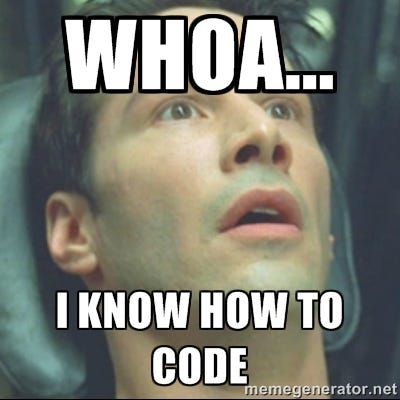The Law of Bruised Foreheads
The Zen of teaching your friend how to Code
More than a good programming course, more than excellent Googling skills, to climb the mountain of Learning to Code, one needs a guide.
This guide need not have official certifications, nor does he need a map. He knows the mountain well because he has climbed it much. He’s climbed it before you, and he will climb it after you. He’s been doing it for years.
A good guide will walk the trail with you. In front of you at times, in others — behind you, but he will never pull you up. He is not a rickshaw driver or a Himalayan sherpa. He will not bring you from point A to B.
A good guide will not allow you to ask a question unless your forehead is all bruised.
Your forehead will become all bruised after you bang it against the wall in frustration at least three times. Once, when your code doesn’t compile. A second time, when you realize that the solutions you found online lead you to a dead end. A third time out of sheer despair.
He who asks his guide a question and his forehead is unbruised — his head is clogged, his mind sealed. Cows may find satisfaction in regurgitating, but human minds must digest on their own.
When your forehead becomes all bruised, a window opens between your eyes. Through this small window, you may ask a question.
When this window is open, your guide will not need to say a word, only to point his finger in the right direction — “there”.
At this moment, true learning occurs, random bits of information connect into meaningful knowledge, frustration disappears and you continue hiking up the mountain.
 Keanu wouldn’t need your help learning how to code, anyway.
Keanu wouldn’t need your help learning how to code, anyway.